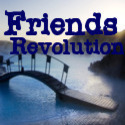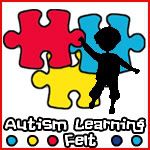FROM: Australian Disability Review
CREATOR: Irving Kenneth Zola (author)
DATE: 1988
PUBLICATION: Australian Disability Review
SOURCE: Available at selected libraries
In The Beginning There Were Words
1 and there were fifty of them:
2 "No otherwise qualified handicapped individual in the United States as defined in Section 7 shall, solely by reason of his handicap, be excluded from the participation in, be denied the benefits of, or be subjected to discrimination under any program or activity receiving federal financial assistance. "
3 Within the last decade words similar to these have been embodied in legislation in states, provinces, and countries around the world. They represent a shift of more than symbolic importance. They dramatise a change for all people with disabilities in our relationship to the larger society. They call for an end to our reliance on private goodwill and public charity. They call instead for a recognition of society’s responsibilities and our own civil rights.
4 In its wake has come a movement with different names throughout the world: Disabled People’s Movement; Handicapped Rights; (and for me, I like the name because of what it conveys) The Independent Living Movement.
The Roots of the Independent Living Movement
5 Like all social movements it has its roots in several others and like many movements of the Post-World War II era, it focuses on a group who has felt disenfranchised, shut off, if not excluded from the mainstream of life.
6 From the Civil Rights Movement, the Independent Living Movement learned that rights without opportunity is meaningless; and so it also emphasised certain entitlements to education, income and medical assistance. It emphasised the need for affirmative action and recognised that oppression runs deep in society and thus coined the terms ‘healthism’ and ‘handicappism’ to rank with our other sins of age, sex and race.
7 The Consumer Movement has often been critical of the sovereignty of the professional. As you know, this sovereignty is especially true of the medical world. For instance, the United States Rehabilitation Act of 1973 no longer allows the professional counsellor to have the final work in case planning. Instead it provides for an individual written rehabilitation plan (IWRP) to be drawn up jointly by client and counsellor.
8 The Self Help or Mutual Aid Movement has long advocated that someone who has been ‘there’ is often the best source of support and help. This has been enshrined as one of the key services to Independent Living Centres, its peer counselling programs.
9 Those involved in the processes of ‘self-care’ have long criticized the increasing medical domination of many of life’s problems. The Independent Living Movement both recognizances the important storehouse of information that former patients have, and that much of chronic care can be better handled free of medical supervision. In fact, much of this medical presence, as in the supervision and training of personal care attendants, may be unnecessary, if not counterproductive.
10. And finally, there are the links to the Women’s Movement. Like the Women’s Self Help Movement, those in Independent Living could well have the same mother: ‘Anatomy is not Destiny’. Women are struggling to reclaim their bodies from medicine. They question the growing medicalisation of their everyday lives. They criticise the necessity of labelling many of their conditions not only as medical, but then by definition something ‘diseased’ if not ‘disabling’ and thereby something to be controlled and gotten rid of (Boston Women’s Health Book Collective 1985). The protest of those of us with disabilities is similar. So too are our realities. There is no denying that women menstruate and become menopausal, become pregnant and give birth. Similarly, we with disabilities do not deny that we have physical differences, be it a loss of vision, hearing, or mobility. But this does not mean we are thereby ‘less thans’. The barriers to this realisation as well as to our full participation are rooted in myths, socially induced and socially maintained by some who wittingly or unwittingly have something to gain by keeping us in out places.
For more on this article see: The Independent Living Movement: Empowering People With Disabilities
Sunday, July 25, 2010
The Independent Living Movement: Empowering People With Disabilities
Posted by
Chris Stonecipher
at
7:58 PM
Subscribe to:
Post Comments (Atom)
 RSS Feed
RSS Feed Twitter
Twitter















6 comments:
Thanks Chris, a well written and informative article. I knew nothing about the Independent Living Movement.
Sorry Kate. I forgot to add the link to the original article. Here it is.
We have come a long way, sadly we still have a long way to go! Excellent article:)
I totally agree with the idea of an Independent Living Movement. In fact I have an article coming up that is very close to this idea. Well done Chris.
Thank you Monica,
I am looking forward to reading it. This has been a part of my life for many years. My three children have autism and i have worked in group/assisted living homes for many years too.
Jo,
In my home town here in Oak Harbor, Washington, we have a perfect example of independent living for adults with disabilities.
Post a Comment